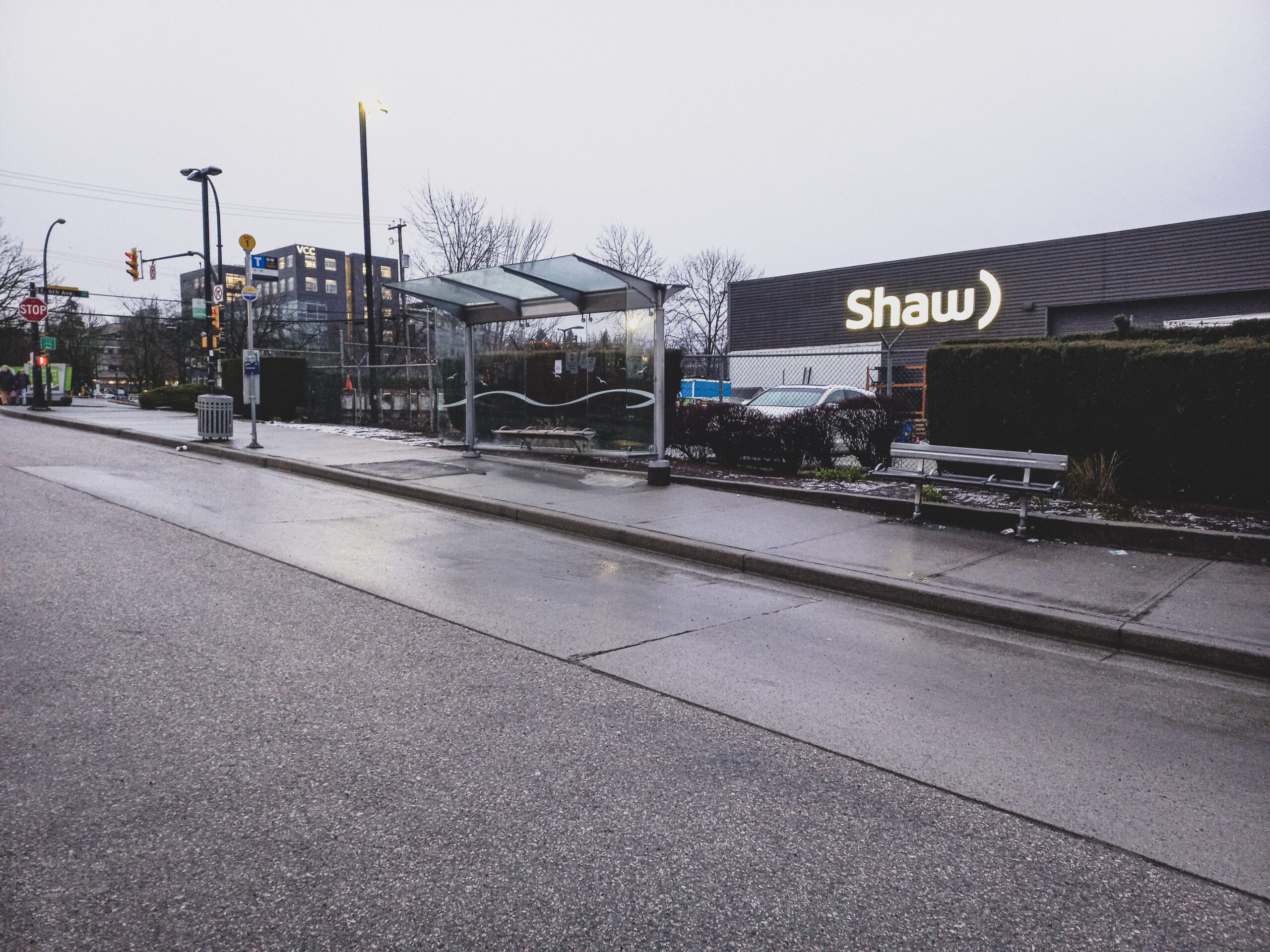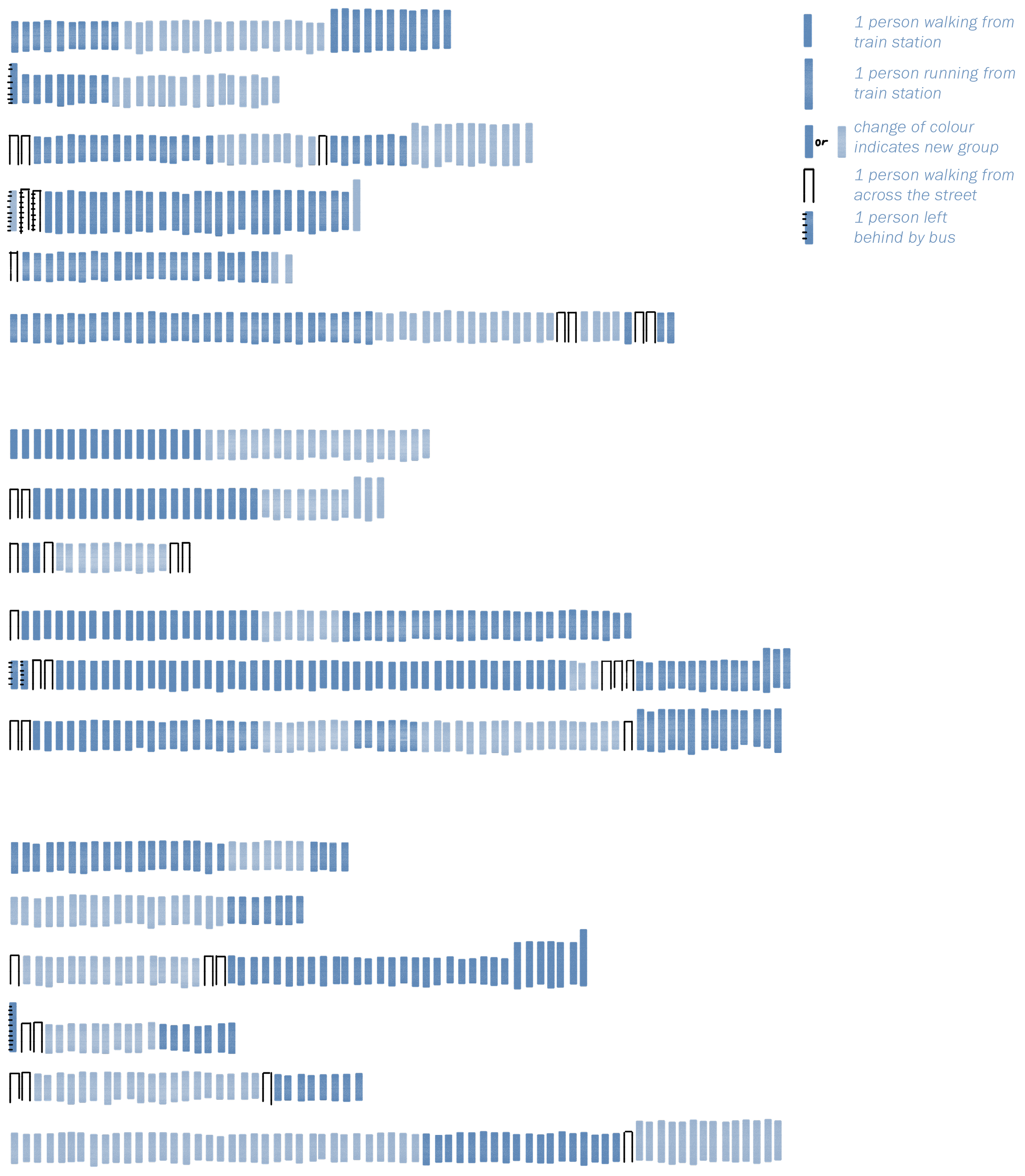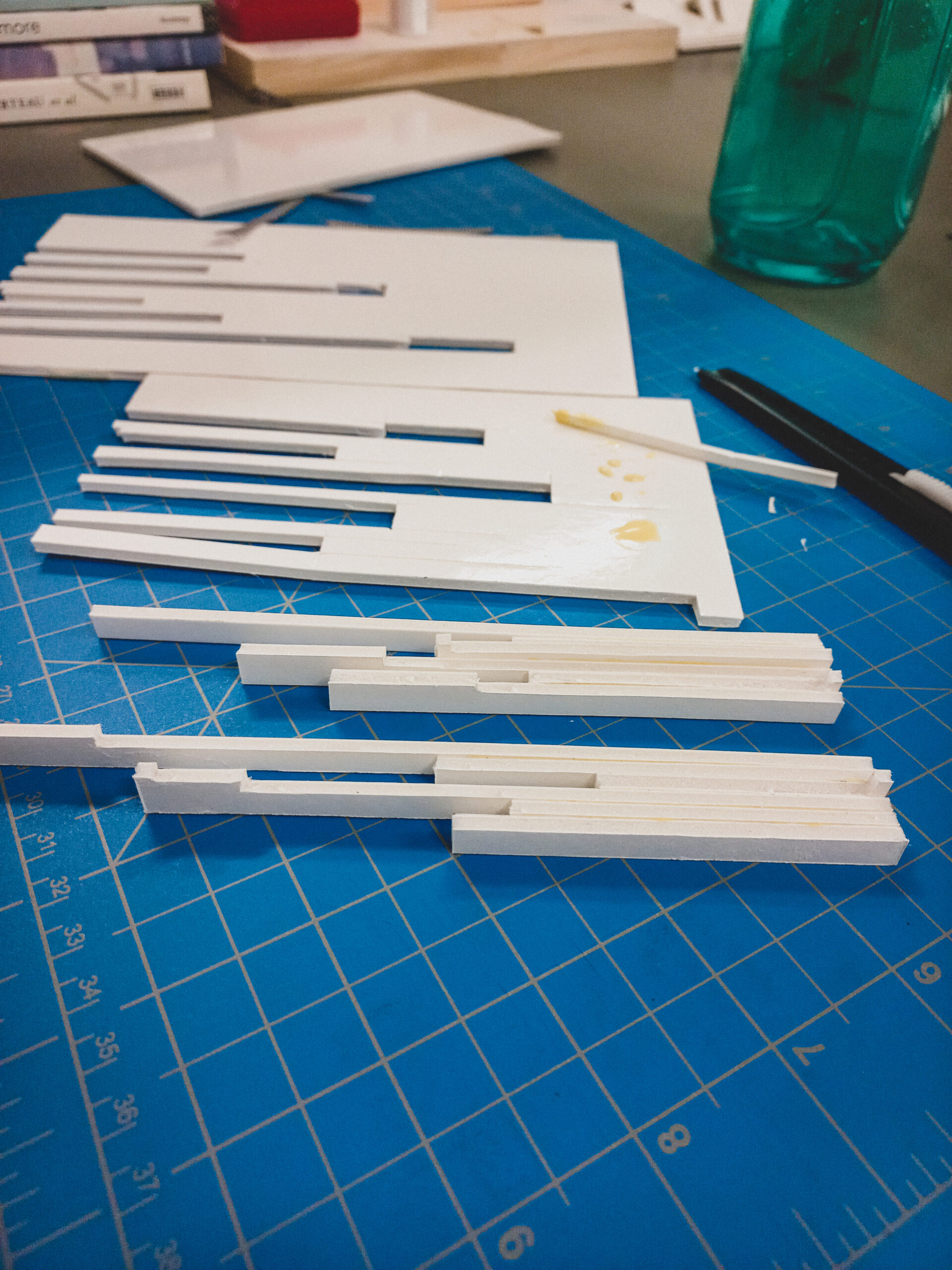RESEARCH-CREATION • DATA PHYSICALIZATION
Social Coordination
As part of my master’s research, I conducted a three-day ethnographic observation in front of the bus 84 stop at VCC-Clark station in order to observe people’s behaviours and interactions in that specific place. I looked at how they paced themselves amidst the winter cold and the intersecting arrival and departure times for both the bus and train, showcasing multitemporal rhythms aligning.
Role: Designer
Type: Solo Project
Year: 2023
The Challenge
Objective “clock” time runs the modern world. Despite our awareness to subjective time perceptions, we cannot eliminate clock time as it is what everyone follows uniformly. Instead, this observational study aims to establish a connection to the objective time interval of train and bus rides at VCC Clark Station utilizing subjective time perceptions based on population density and foot traffic of passengers queued at the bus stop.
Hypothesis
My initial hypothesis for this observation was that one would be able to tell when the bus is about to arrive simply by looking at the length of the queue from the bus stop. As it turns out, there are other unexpected findings that add onto this initial hypothesis which further informed my overall thesis study on human interactions.
DESIGN QUESTION
How might one be able to determine bus interval objective time through subjective time perceptions of people in queue?
Field Observations
Through this observation, I noted how many people at a time got off from the train and waited at the bus stop, when the bus arrived, when it left, and when people felt the need to start running towards the bus trying to catch it.
I observed the interaction and behaviour of people in this particular space—with respect to the length of the queue of people, distance from the bus number post, exit gates of the train station, and the bus itself—focusing on the transitioning of people from exiting the train station to getting on the bus 84. I paid great attention to the number of people that extended physically the queue at the stop and the presence of the bus, accounting for the scheduled bus arrival time interval.
Data Visualization
Observations were noted by visualizing each person in the bus stop as bar diagrams.
- The height of said bar indicated whether said person was walking calmly or rushing to get to the bus from the train station.
- A change in colour indicates a different set of people getting off the train which had a more frequent interval than the bus.
- A simple outline of the bar was drawn to indicate a person coming to queue in the stop who came from the other side of the street and not the train station.
- And lastly, bars with dashed lines on their left indicate that they were a part of the previous group, most likely rushing to reach the bus before it had left, but were unfortunately left behind and had to wait for the next bus to arrive.
Data Physicalization
Physicalizing the data gave a better understanding of situating the pattern of foot traffic to bus interval estimation through people’s behaviour in context to the space, perceivable and understood as a form of agreed social coordination.
Insights
Pace of walking… or running
There was a particular rhythm in people’s arrival at the bus stop, be it from the train or from nearby walking distance areas.
People stayed calm and collected in a slow pace when the bus isn’t there yet. They would casually still pace their walking when the bus wasn’t there but would take shortcuts in the route to the queue whenever the line had already exceeded a certain distance from the start of the queue. And lastly, people were of great emotions trying to catch the bus whenever they see the bus in place to board in fear of being left behind. For those who had ran but were left behind by a hair of a second, they were evidently upset as they would need to wait for the next bus in the morning winter cold.
Population density
There was a pattern in the number of people who arrive for respective bus arrival times, evident throughout the three-day observation period. It can be attributed to people’s routines in commuting to their respective destinations.
Based on the observations, bus arrival intervals may be estimated through the density of people in the bus queue at a certain time. Specific bus intervals have more people than other intervals, which highly depend on individual personal everyday factors, however, may be sequenced into a pattern of habit.
What does this mean?
This case illustrates how social coordination and understanding become the norm in our engagement within environments. How we act and behave changes depending on context within a period of time or the introduction of a new component. In this case, components being bus arrival, elongation of waiting queue, specific bus stop as start of route, and outdoor winter conditions.
This has helped my thesis research in its early stages be more aware of the variety and unexpectedness of user behaviour brought by the contextualization of a space based on the assumptions of roles people take associated and influenced by the environmental factors of these spaces.
© Erik Asia 2025. All rights reserved.



